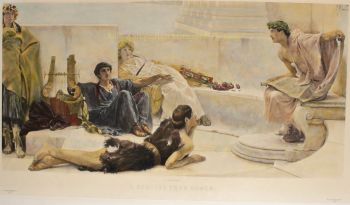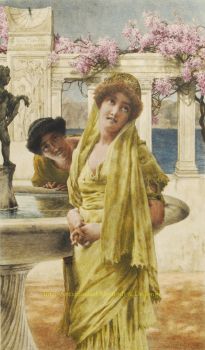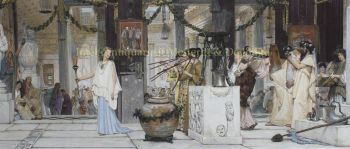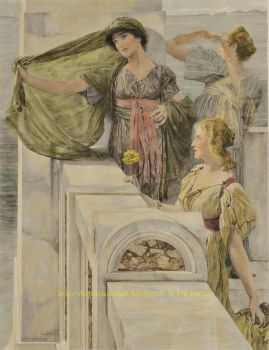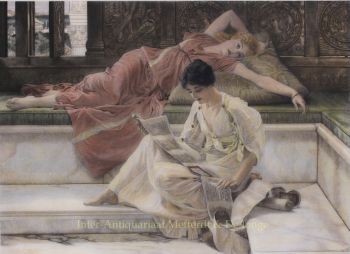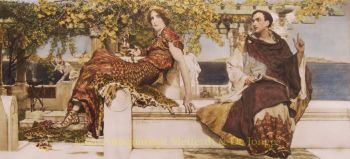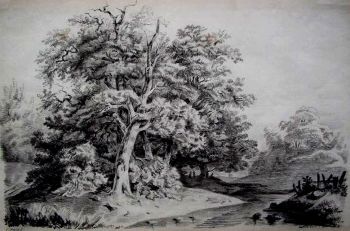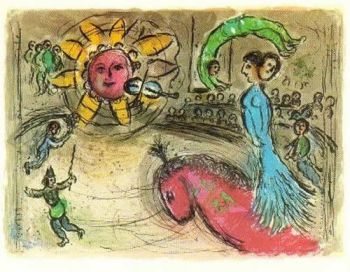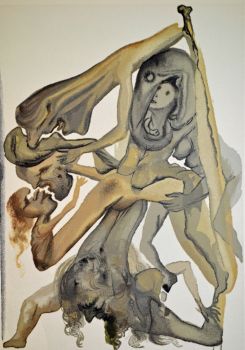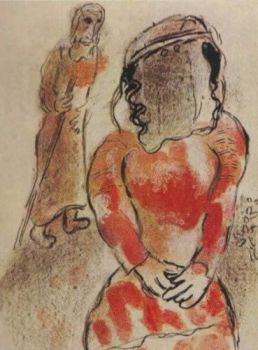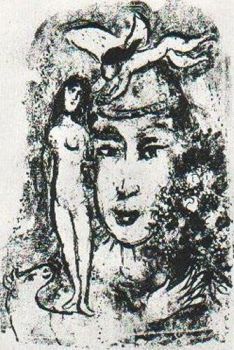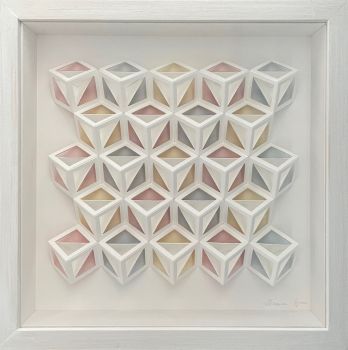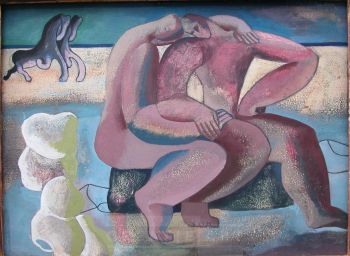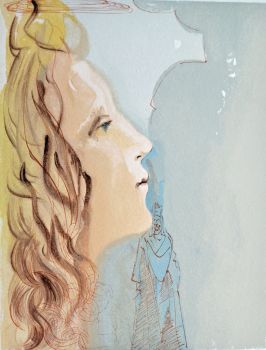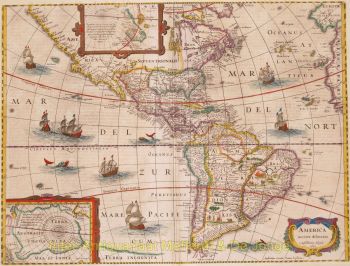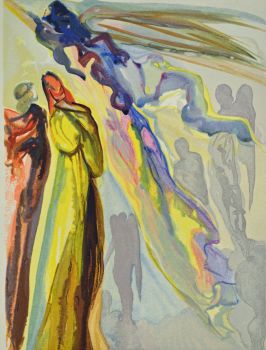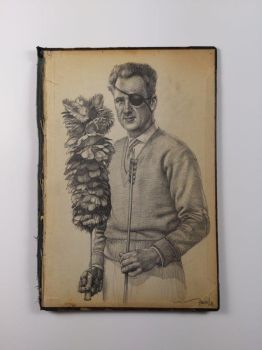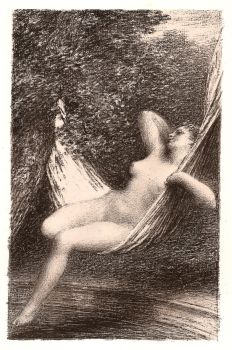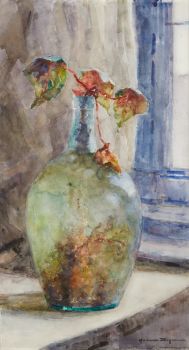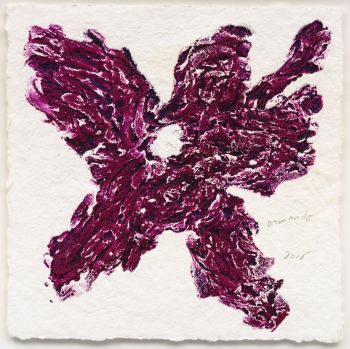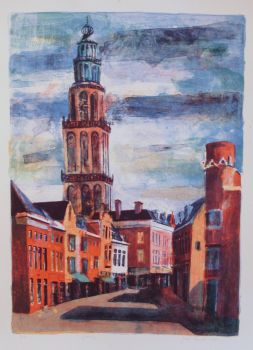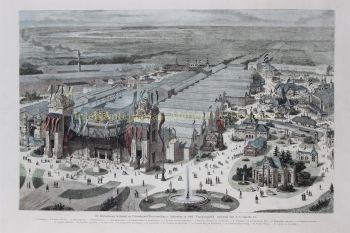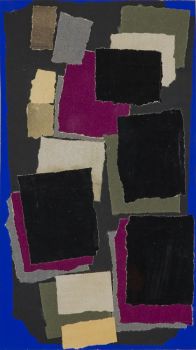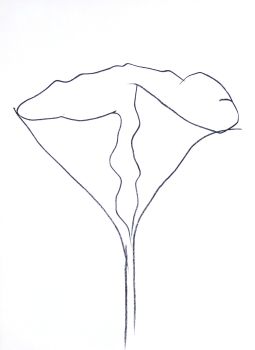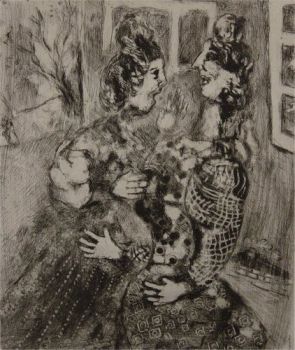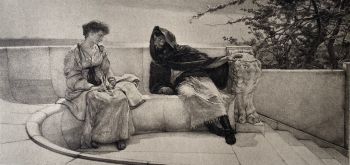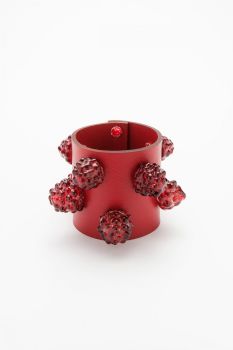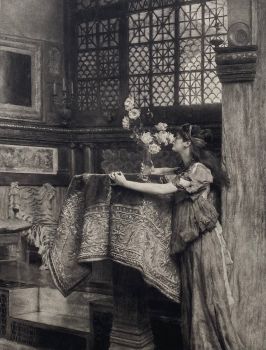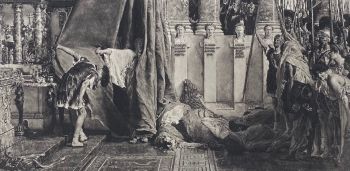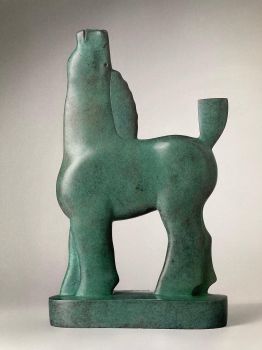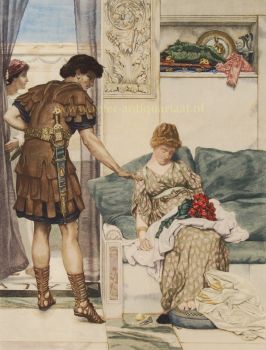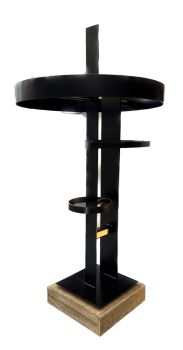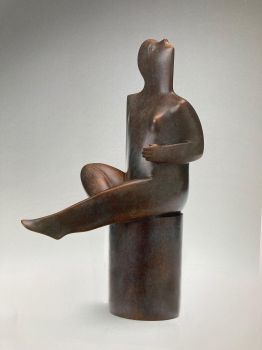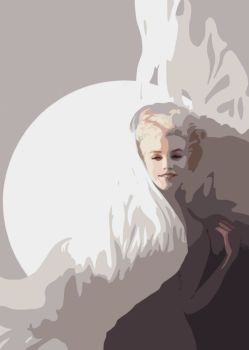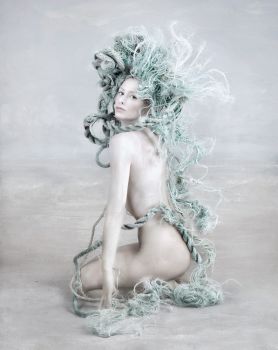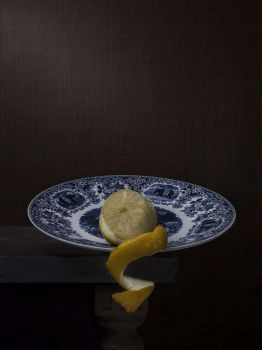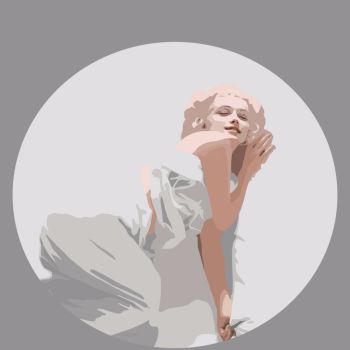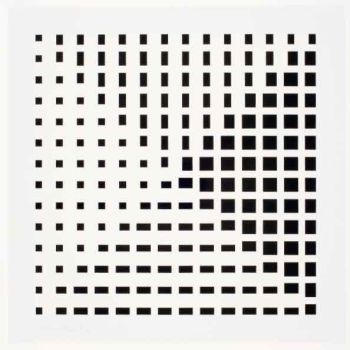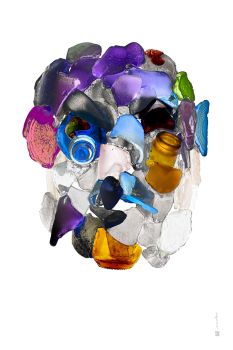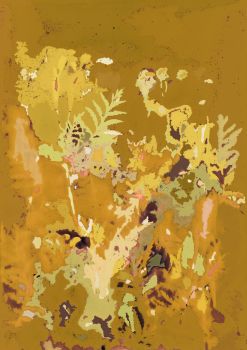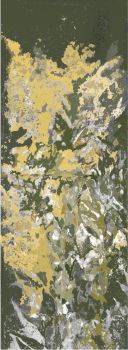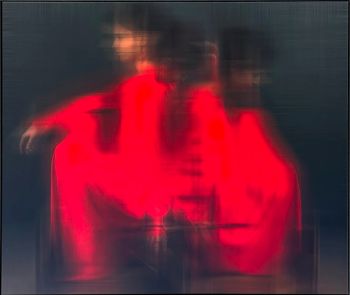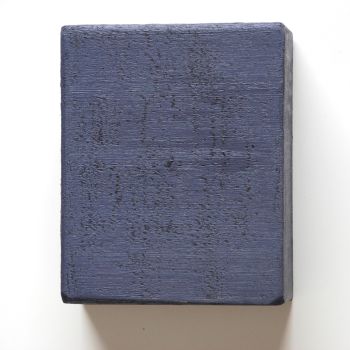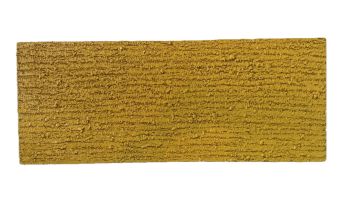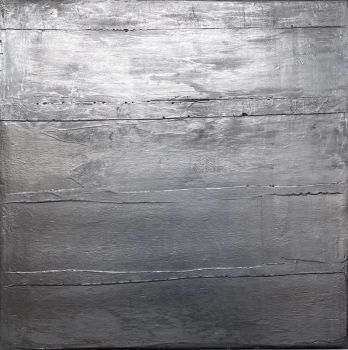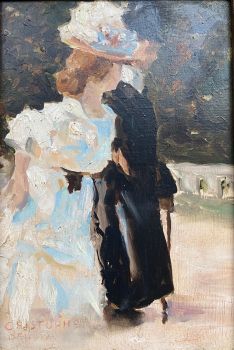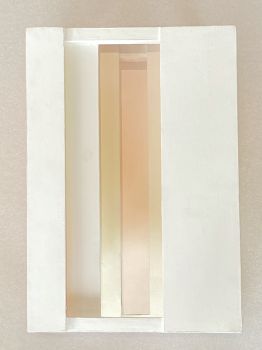"Spring" (original photogravure/ print, signed and hand coloured) 1894
Lawrence Alma-Tadema
HeliografíaImpresión de papel de bellas artesFoto litografíaImpresión fotográfica
89 ⨯ 39 cm
Precio a consultar
Gallerease Selected
- Sobre la obra de arte
"Spring", engraving/ heliogravure / photogravure/ print) made in 1894 by the Berlin Photographic Co. after the painting (Opus CCCXXIV) by Sir Lawrence Alma-Tadema. Handsigned by Alma-Tadema in pencil lower left. Coloured by hand in the same period. Dimensions: 89 x 39.5 cm. In original Victorian frame. Spring is thought to revolve around a procession during the Floralia, a flower festival held in the early Roman Empire from April 28 to 3 May. During the festival, Flora, the goddess of flowers and plants, was central. The painting is one of Alma-Tadema's most famous and ambitious works. The cheerful procession descends from the Palatine Hill. Servants of the Temple of Flora play the tambourine and flute. Behind them, under the canopy, is a bearded priest, with the features of Alma-Tadema herself. Spectators throw flowers abundantly from the roofs of the marble palaces. On the list of the new the engraving is a verse by poet A.C. Swinburne: In a land of bright colors and stories, In a region of shadowless hours, Where the earth has a garment of glory, And a murmur of musical flowers. The work's setting is fictional, bringing together architectural details from a wide variety of sources, including the Pompeii mural in the balcony at the top of the stairs and the frieze of warring centaurs from the temple of Apollo at Bassae on the building to the left. Halfway through the procession, two statues of Satyrs are carried, with a basket of fruit in their hand and Dionysos as a child on their shoulder as a personification of the growing power of the earth. Spring Alma-Tadema was awarded the Grand Prix for the painting at the World Exhibition in Paris in 1900. The work was highly praised by critics at the time, and today it is one of the J. Paul Getty Museum's best-loved paintings. The painting's first owner, Robert Mendelssohn-Bartholdy from Berlin, lent the work to Empress Friedrich (the wife of the late Emperor Friedrich III of Germany), who hung it in her bedroom to recover after an illness. One reviewer wrote: "[The painting] not only appeals to the viewer's sense of beauty, it also makes him look at it positively."
- Sobre el artista
Lawrence Alma-Tadema es uno de los artistas románticos más reconocidos de la Gran Bretaña de finales del siglo XIX. Nació en los Países Bajos como Laurens Tadema, en la familia del notario de la ciudad. Más tarde, mientras trataba de hacerse un hueco en el mundo del arte, cambió la ortografía de su nombre por el más inglés "Lawrence" e incluyó su segundo nombre "Alma" como parte de su apellido, por lo que figuraría entre las “A” en los catálogos de exposiciones.
De niño, se decidió que Alma-Tadema seguiría la carrera de abogado, pero sufrió un colapso mental y físico cuando tenía quince años. Fue diagnosticado como tísico, se le dio poco tiempo de vida y, por lo tanto, estaba libre para llevar una vida de ocio y placer. Una vez abandonado por sus propios medios, decidió estudiar arte, ya que su madre había pagado las lecciones de arte en su infancia y era uno de sus intereses. Recuperó su salud y estudió en la Real Academia de Amberes en 1852, donde ganó varios premios respetados. Su primera obra importante se exhibió en 1858, ganó muchos elogios de la crítica y causó sensación en el mundo del arte.
En 1862, se instaló en su propio estudio para seguir su carrera individual en el arte. En 1869, Alma-Tadema perdió a su esposa de seis años a causa de la viruela. Desconsolado y deprimido, dejó de pintar y su salud empeoraba. Bajo el consejo de su médico, viajó a Inglaterra para un diagnóstico médico, donde fue invitado a la casa de un colega pintor, Ford Madox Brown. Fue aquí donde vio a Laura Theresa Epps, que en ese momento tenía 17 años, y se enamoró locamente de ella. Alma-Tadema aprovechó el estallido de la guerra franco-prusiana para trasladarse a Inglaterra, donde no perdió tiempo en contactar con Laura y contratarla en clases particulares de arte. Fue durante una de estas lecciones que Alma-Tadema propuso, y se casaron poco después. Alma-Tadema tenía 34 años y la novia 18.
Alma-Tadema pasó la siguiente parte de su vida viajando por Europa y disfrutando del éxito continuo de sus pinturas. Como hombre, sus estallidos de mal genio fueron aliviados por su personalidad cálida y extrovertida y su sentido de la travesura. Trabajador perfeccionista y obsesivo, también innovó una nueva técnica de numeración, que dificultaba a los falsificadores hacer pasar obras no originales. En sus últimos años, aunque su producción artística disminuyó algo, disfrutó de un éxito continuo, convirtiéndose finalmente en uno de los pintores más ricos del siglo XIX. Fue nombrado caballero en Inglaterra en 1899.
En 1912, Alma-Tadema viajó a Alemania para someterse a un tratamiento por úlcera de estómago y murió en Alemania a la edad de 76 años. Después de su muerte, su trabajo fue mayormente ignorado. Debido a los drásticos cambios que se están produciendo en el arte, el genio artístico de Alma-Tadema no volvería a aparecer en el ojo público hasta la década de 1960. Desde entonces, su meticuloso trabajo se ha utilizado como material de partida para docenas de películas de Hollywood.
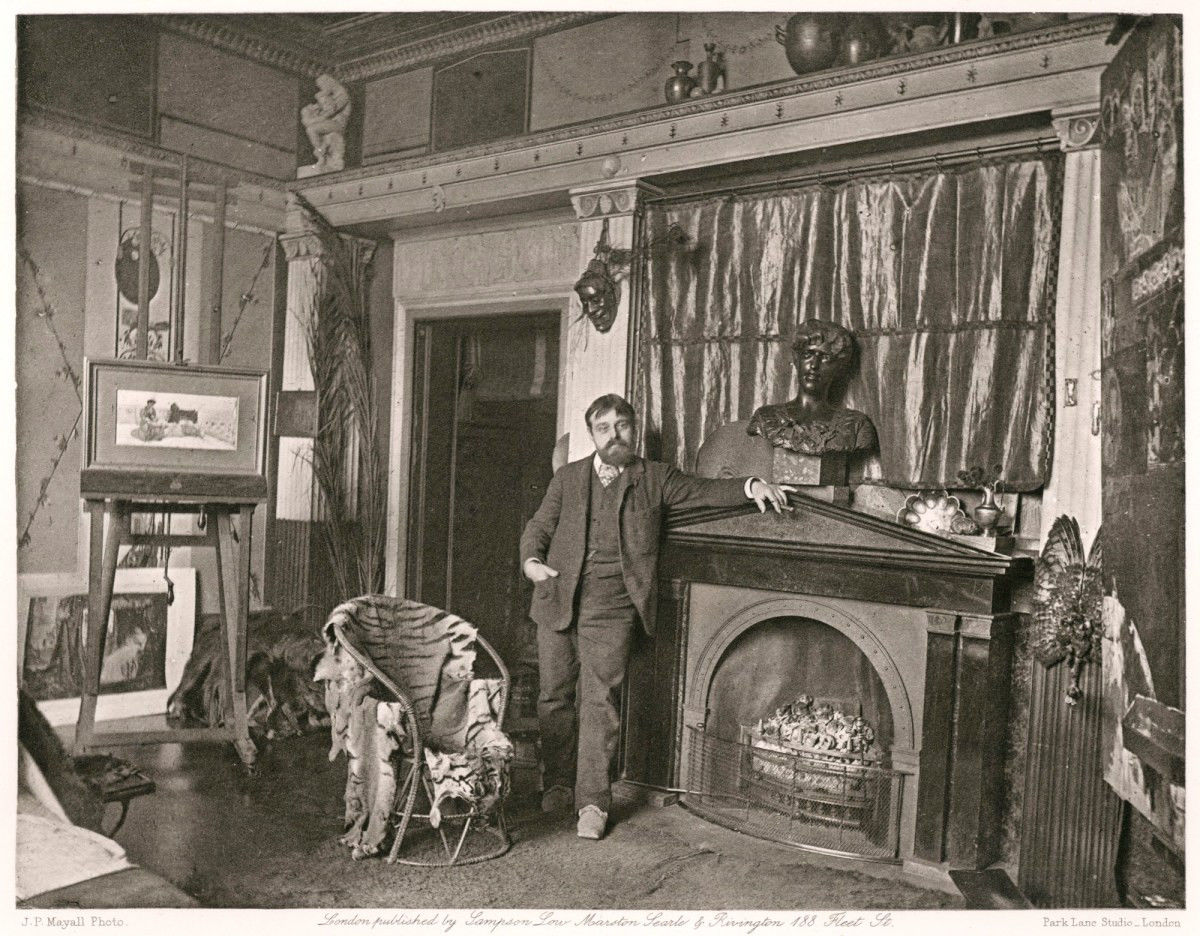
¿Está interesado en comprar esta obra de arte?
Artwork details
Related artworks
- 1 - 4 / 12
Artista Desconocido
Pulseira de diamante do século 18 com entalhes de 2.000 anos1790
€ 23.000Adin Fine Antique Jewellery
 curada por
curada porDanny Bree
1 - 4 / 24- 1 - 4 / 24
- 1 - 4 / 24
- 1 - 4 / 24
- 1 - 4 / 12
















